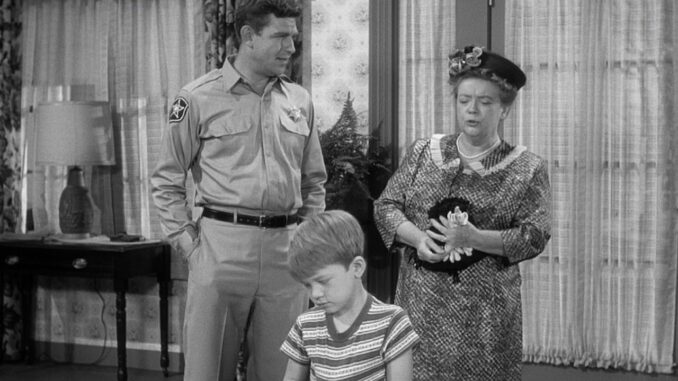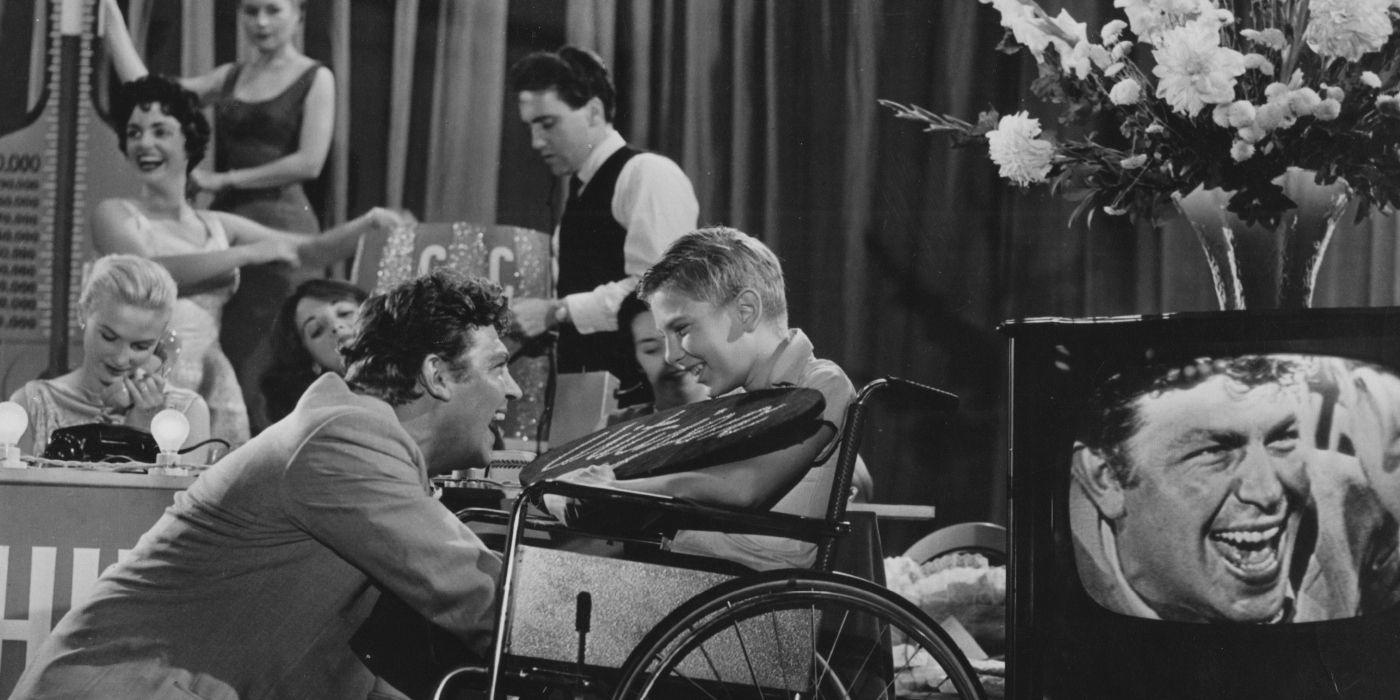
Introduction: When Mayberry Wasn’t So Peaceful
Mayberry seemed like the most peaceful town in America, didn’t it? Watching The Andy Griffith Show, you’d think the cast lived in harmony off-screen just like their characters did on it. But behind the scenes, things weren’t always so pleasant. At the center of the storm? Andy Griffith himself—whose real-life anger issues subtly trickled into the beloved series.
Let’s peel back the curtain on a side of Mayberry that fans rarely saw and explore how Andy’s personal temperament influenced the show we all thought we knew so well.
The Public Persona vs. The Private Man
On-screen, Andy Taylor was the calm, understanding father figure we all adored. But off-camera, Andy Griffith was reportedly a different man entirely. Colleagues, crew members, and even guest stars have hinted that Andy had a short fuse and could be demanding, even explosive, under pressure.
It’s not uncommon for actors to wear masks, but with Andy, the difference between the man and the myth was sharper than most fans ever realized.
The Pressure of Playing Andy Taylor
Imagine carrying the weight of one of television’s most wholesome shows on your shoulders. Andy wasn’t just the lead actor—he was the show’s heart and soul. That kind of responsibility can eat at a person.
According to insiders, the pressure to maintain a perfect image both on and off-screen created stress that sometimes boiled over into anger. Griffith didn’t tolerate mistakes well, especially when shooting was behind schedule or a scene didn’t go his way.
Cast Members Speak Out About Griffith’s Temper
Over the years, various cast and crew members have spoken—sometimes delicately—about Andy’s temper. While most remained respectful, it was clear Andy’s mood could shift quickly. Some described a man who was intense, focused, and, at times, difficult to work with.
One insider revealed, “When Andy was in a bad mood, everyone knew it. You just stayed out of his way.”
Don Knotts and Andy Griffith: A Complex Friendship
Don Knotts, who played the bumbling but lovable Barney Fife, had a unique relationship with Andy. They were close friends—but even that bond didn’t shield Knotts from Andy’s occasional outbursts.
Still, their chemistry on-screen was undeniable. It’s said that Knotts knew how to navigate Andy’s moods, often using humor to defuse tense situations. In a way, their friendship was like a dance—one where Don had to know exactly when to step lightly.
Frances Bavier’s Struggles With Andy’s Mood
Frances Bavier, the actress behind Aunt Bee, was famously private and sensitive. Reports suggest she and Andy clashed often. She found his mood swings unsettling and sometimes retreated from cast gatherings entirely.
In fact, Bavier and Griffith’s strained relationship became so well-known that it was even referenced in retrospectives. She once apologized to Andy in her later years—possibly a peace offering for years of working under tense conditions.

Did Andy’s Anger Make It to the Screen?
If you rewatch certain episodes, you might spot something you missed before—a flash of irritation in Andy’s eyes, a sharp tone in his voice, a tight-lipped smile that doesn’t quite match the warmth of Sheriff Taylor.
While the scripts always painted Andy as calm and collected, subtle moments of tension—especially in the later seasons—could reflect the actor’s real-life frustration seeping into his performance.
Episodes That Hint at Real-Life Tension
Certain episodes carry an unexpected intensity. Take the episodes where Andy is stern with Opie, or when he lashes out at Barney. They’re few and far between—but when they happen, they seem to hit a little harder.
Was it just good acting? Or did those scenes offer glimpses of Andy Griffith’s personal battle with his temper?
How the Writers Managed Andy’s Temper
The show’s writers and producers learned early on to work around Andy’s moods. Scripts were often adjusted, scenes reshot, and schedules rearranged to keep the peace on set.
Some sources say writers would avoid delivering notes directly to Griffith, opting instead to pass them through intermediaries. It was a silent system—designed to keep the show running smoothly and the star from boiling over.
Production Staff Walked on Eggshells
Behind the camera, the vibe wasn’t always as warm as the scenes on-screen. Crew members learned to “read the room”—and Andy’s mood determined the tone of the day.
It’s been said that a cheerful Andy meant a good shooting day. But if he came in agitated, everyone knew to stay quiet, keep their heads down, and get through the shoot as quickly as possible.
Andy’s Soft Moments vs. His Stormy Ones
Despite his temper, Andy had plenty of soft, generous moments. He mentored young actors, supported his co-stars’ careers, and was fiercely loyal to friends like Don Knotts.
It’s this duality that makes Griffith so fascinating. He wasn’t just a nice guy—or a hothead. He was both. A man of extremes, navigating fame, pressure, and personal demons while putting on one of the most beloved TV performances of all time.
Why Andy’s Anger Wasn’t Widely Known at the Time
Back in the 1960s, there was no social media, no TMZ, no instant access to behind-the-scenes gossip. Networks controlled the narrative, and stars like Andy Griffith were protected by a wall of public relations.
Unless a story was leaked to the press (which was rare), most fans had no idea what their favorite actors were really like. Andy’s image stayed squeaky clean—and most viewers never suspected otherwise.
Mayberry’s Calm Masked a Tense Backstage Environment
In many ways, Mayberry was the perfect mask. The town’s calm, friendly charm was a soothing contrast to the occasional chaos behind the scenes. Viewers tuned in for comfort, never guessing that the man leading the show sometimes struggled to keep his emotions in check.
That contrast makes the show all the more interesting in hindsight—a cheerful illusion built on the shoulders of a very human, very complex star.
Fans Noticed a Shift in Later Seasons
Hardcore fans often note a tonal shift in the show as it went on. Some of that came from the departure of Don Knotts, which left a noticeable hole. But others believe it also had to do with Andy himself, who seemed less patient, less playful, and more serious in the later seasons.
Was that creative evolution—or was it Andy’s real-life frustrations rising to the surface?
Andy Griffith: A Flawed but Talented TV Icon
At the end of the day, Andy Griffith was human—flawed, passionate, and driven. His anger didn’t define him, but it certainly influenced his work. The fact that he could carry such a demanding role while juggling inner turmoil is a testament to his skill as a performer.
Mayberry may have been fiction, but the emotions that fueled it—good and bad—were very, very real.
Conclusion: The Price of Perfection in Mayberry
The Andy Griffith Show gave us a version of small-town life that felt timeless and serene. But that peace came at a cost. Behind the scenes, Andy Griffith was wrestling with his own storms—and some of those storms crept into the show we all love.
Still, that complexity is what makes the show endure. It wasn’t just cotton-candy television. It was built on real people, real feelings, and real struggles. And that’s why, decades later, it still matters.
FAQs
1. Was Andy Griffith really angry behind the scenes?
Yes, multiple cast and crew members have reported that Griffith could be short-tempered, especially under pressure.
2. Did Andy Griffith’s anger affect the show’s quality?
Not directly. While tensions existed, the show remained well-produced. In fact, his intensity may have added a certain depth to his performance.
3. Did Don Knotts ever talk about Andy’s anger?
Knotts rarely spoke publicly about it, but their friendship allowed them to manage any behind-the-scenes issues privately and respectfully.
4. Did Frances Bavier and Andy Griffith ever reconcile?
Yes, near the end of her life, Bavier reached out and apologized to Andy, suggesting a mending of old wounds.
5. How did the crew handle Andy’s moods?
Crew members and writers often worked around Griffith’s temperament by adjusting schedules or relaying messages through others to avoid direct conflict.
